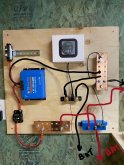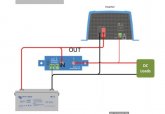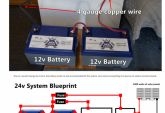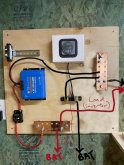Hello
@Justin Laureltec - just posted a video of the build and there are already negative comments - Ha... too funny. Just wanted to get your take. You can watch the video here and read the comment from Will Power - he says my battery cables should be the same length, which might be true - however, they are only about 6 inches different and everything is within 2 feet of each other - so how big of a deal is this...? I AM in the process of getting a fuse for the battery to the inverter (120A) - but what about grounding...? Can you shed some light there? I can ground it if needed. Is that done to the negative bus bar using a rod pounded into the ground outside connected by a solid copper wire? No problem if that is what I need to do

Thanks!
Jm
Dude, you could post a video of literally anything and there will be negative comments... some people just live for that. I'll go have a look though. Re the battery cables -
technically speaking, all cables should be exactly the same length.
Realistically speaking, a few inches difference here or there -particularly as long as your cables are of suitable gauge- won't make a lick of difference. A few milliOhms difference isn't gonna crash your system. Battery to inverter, yes you definitely need to be fused... I thought you had one already? Or maybe we just talked about one? Or maybe that was a different fuse... eh, hard to keep track, I have so many fusing conversations every day...
Grounding gets funky depending on your application; I mostly deal with mobile applications in which the inverter case ground gets tied to the vehicle chassis, but in permanent-mount installation at a residence, then sure, the ground should go to a ground rod (applicable regulations vary depending on actual usage intent).
We're a distributor only and don't do installs, so the simple reality is that the vast majority of our customers don't even use the case ground on their inverters and SCCs, but technically they definitely should.
I'll go have a look and see if I have any useful input








